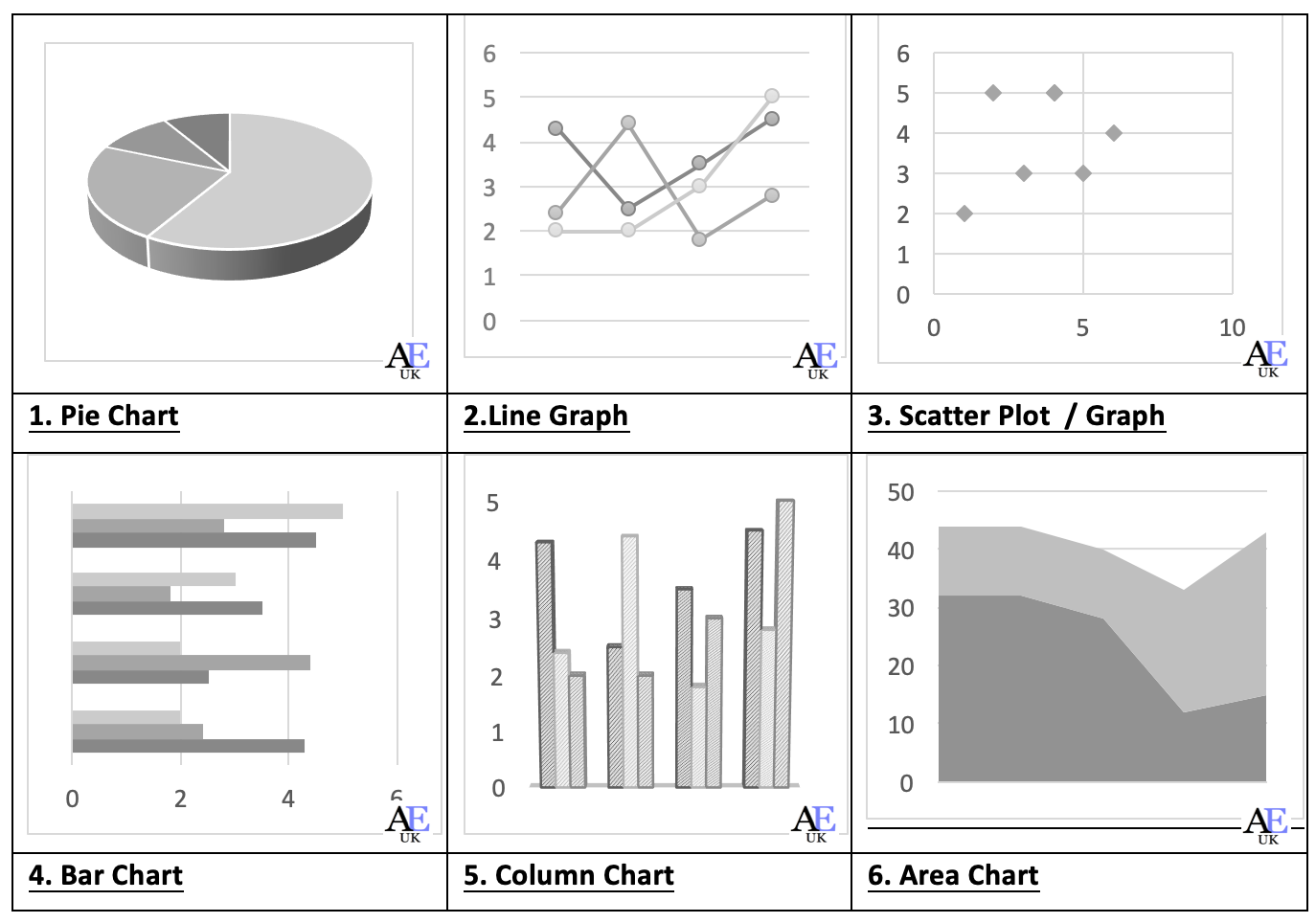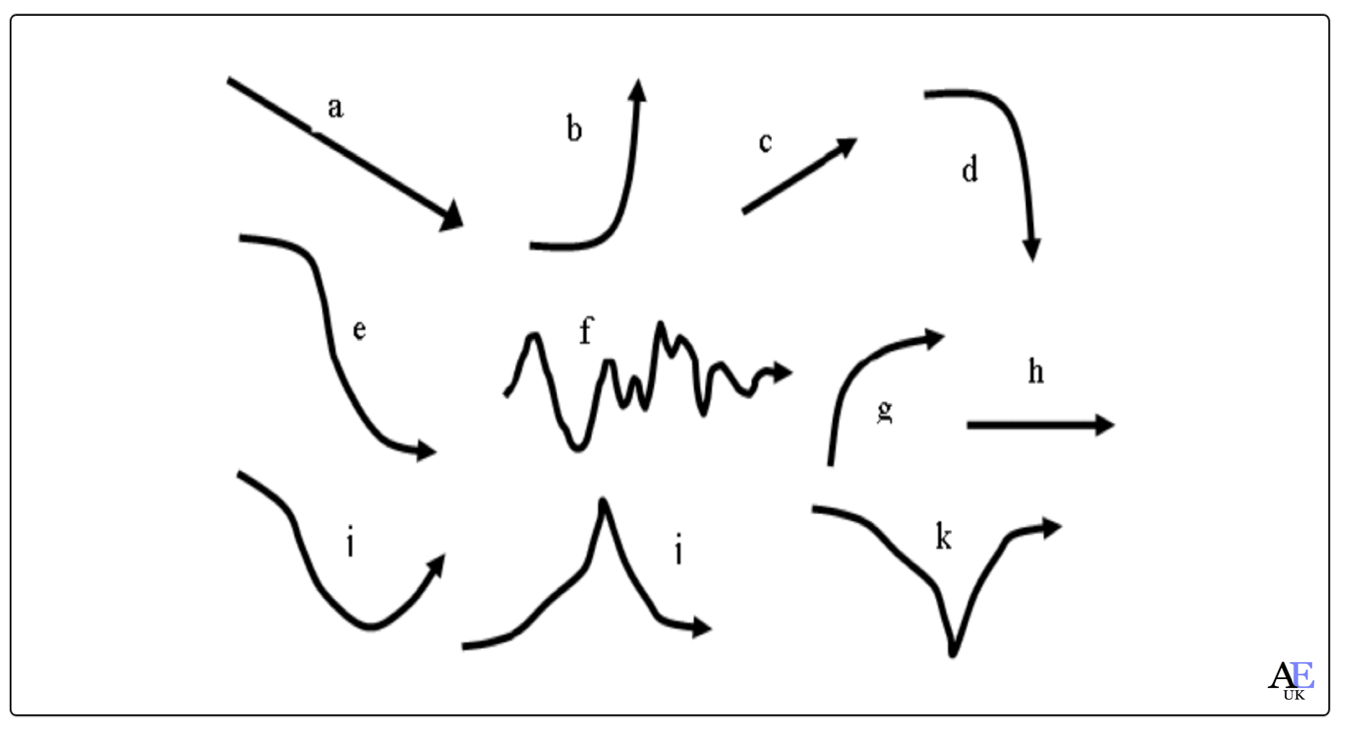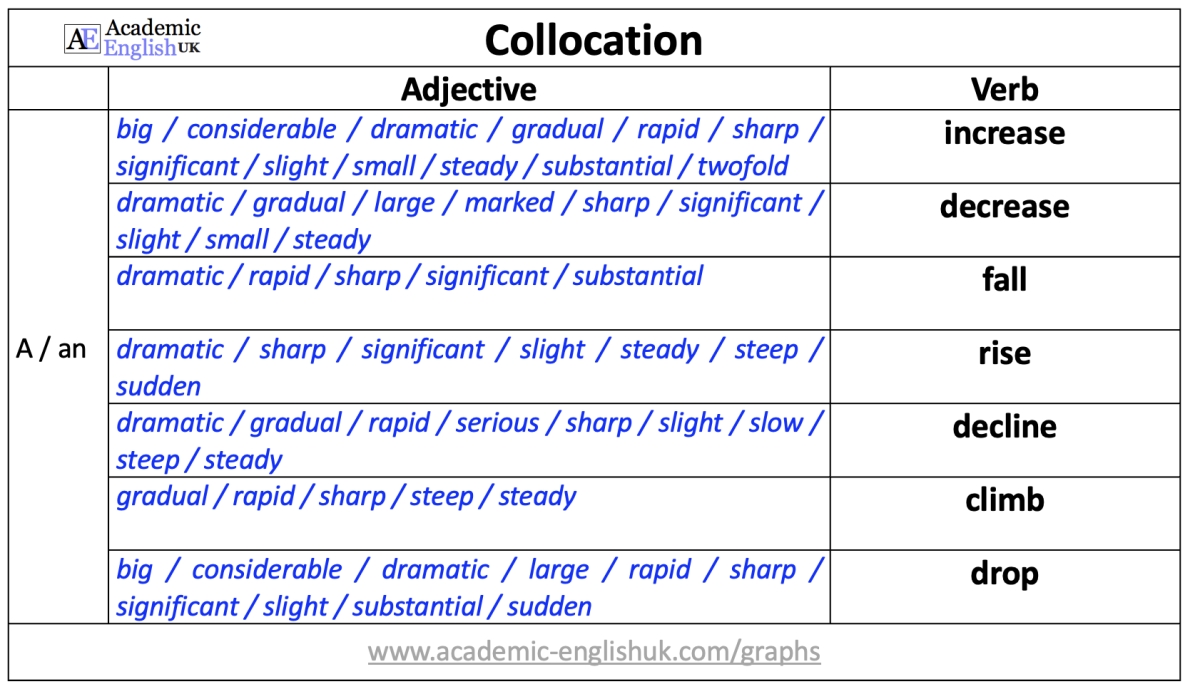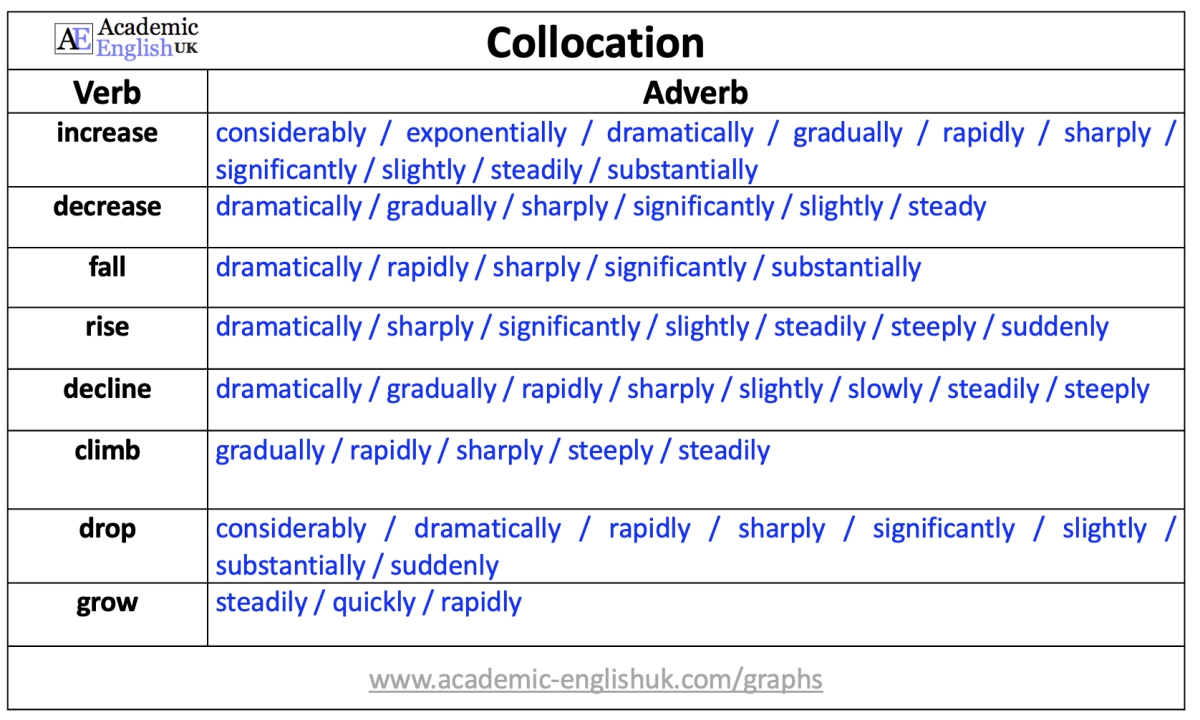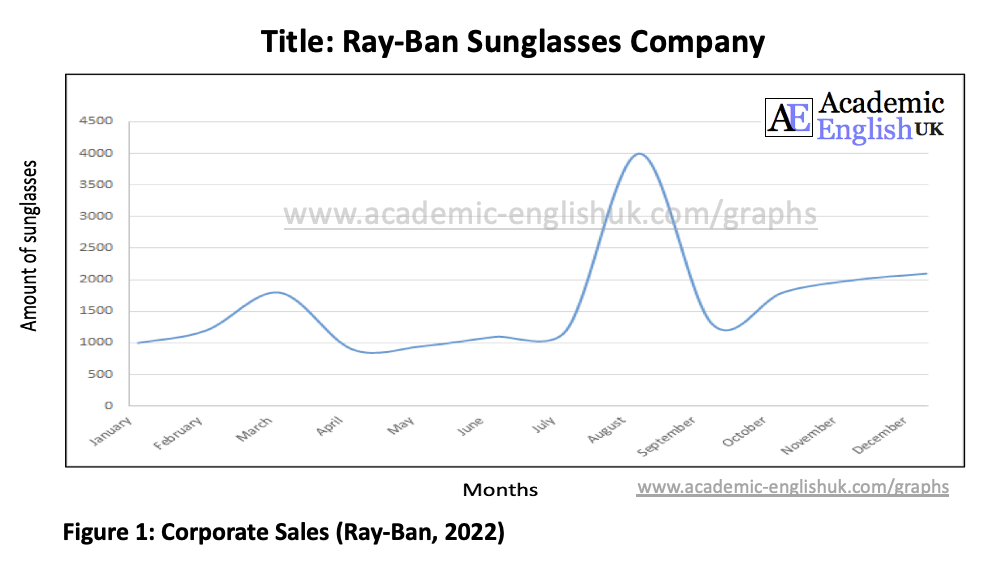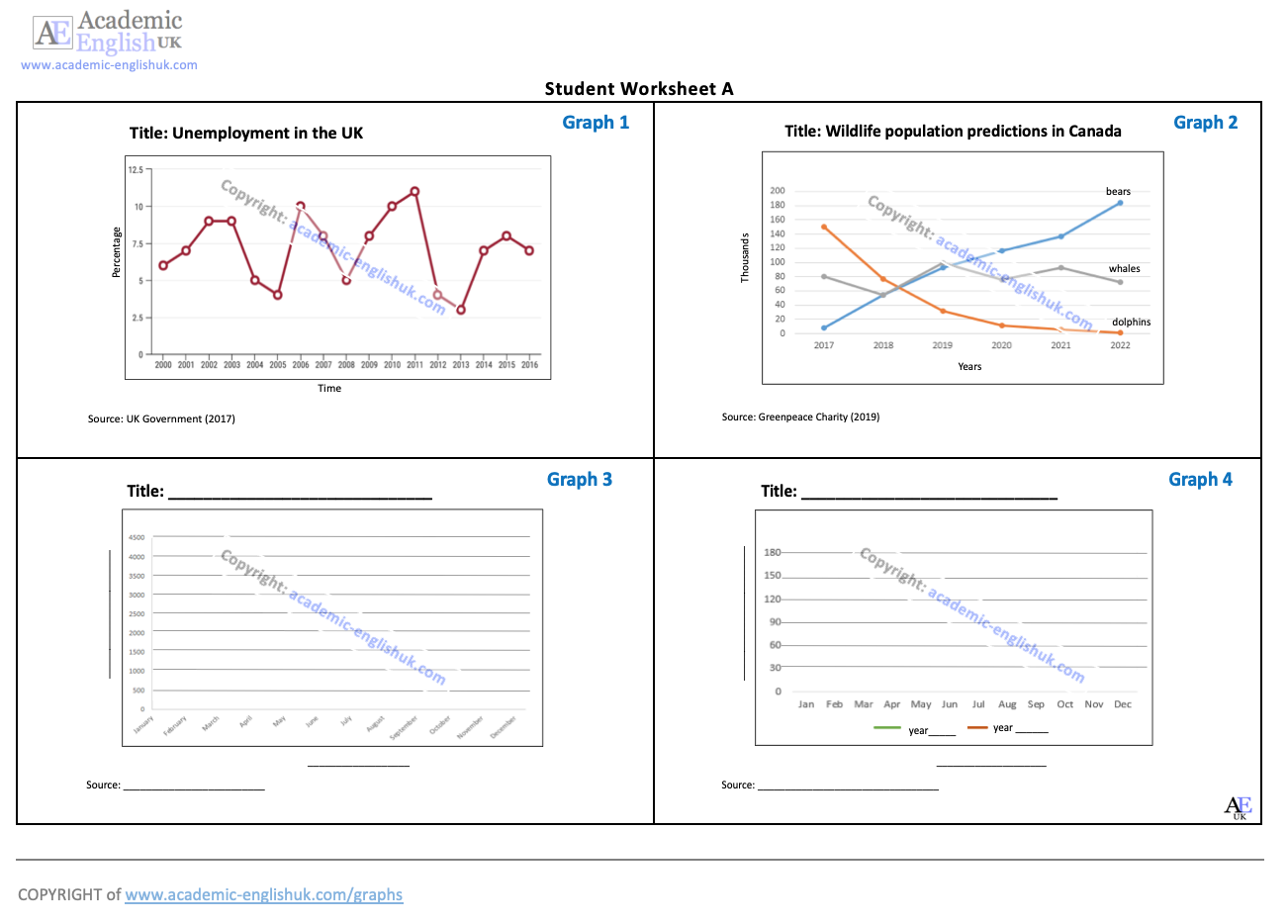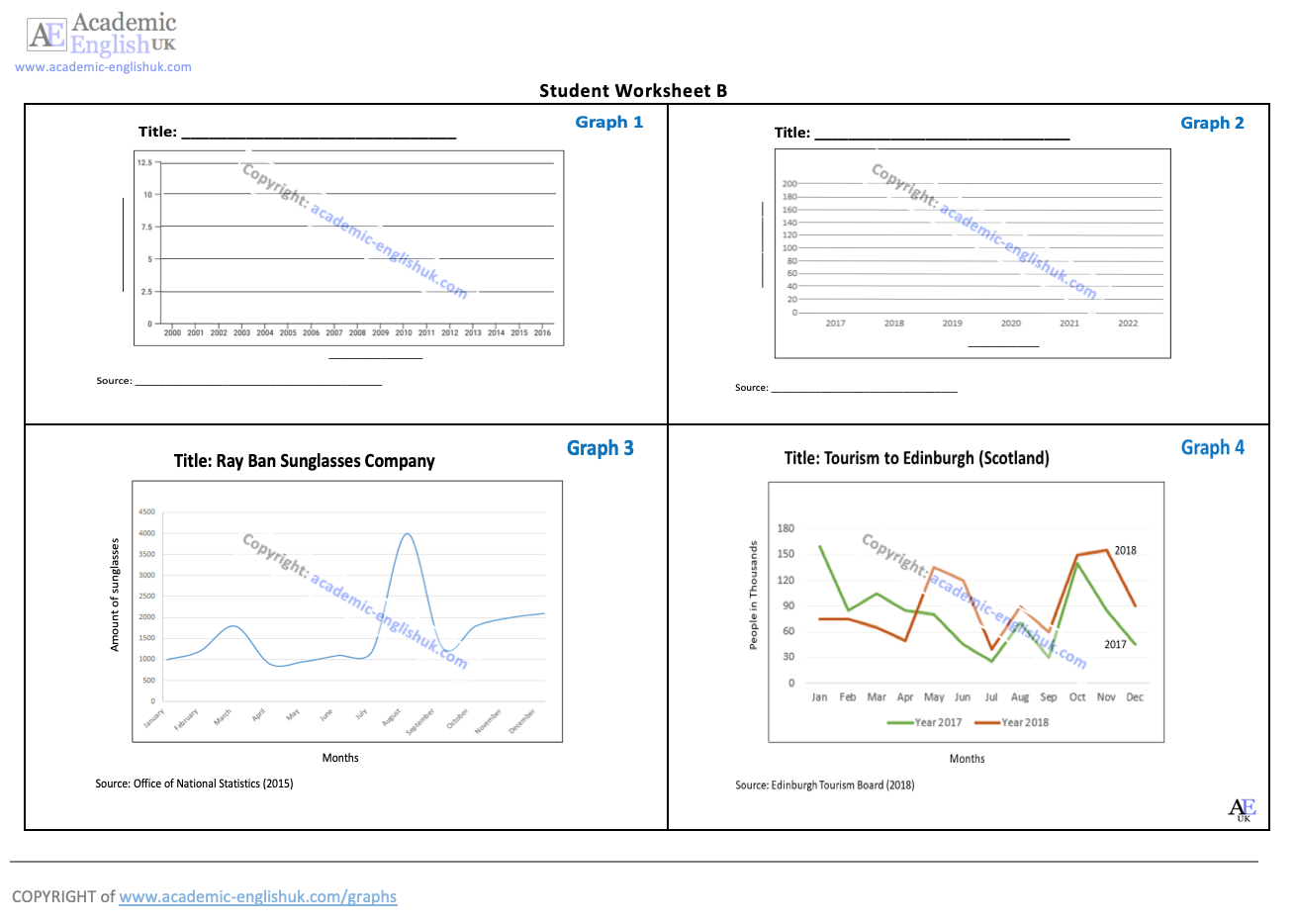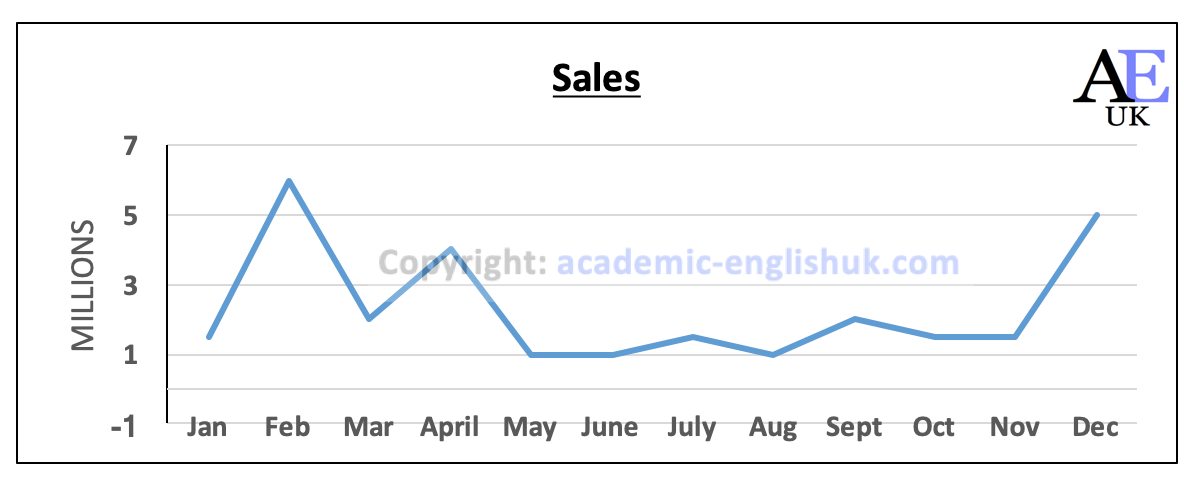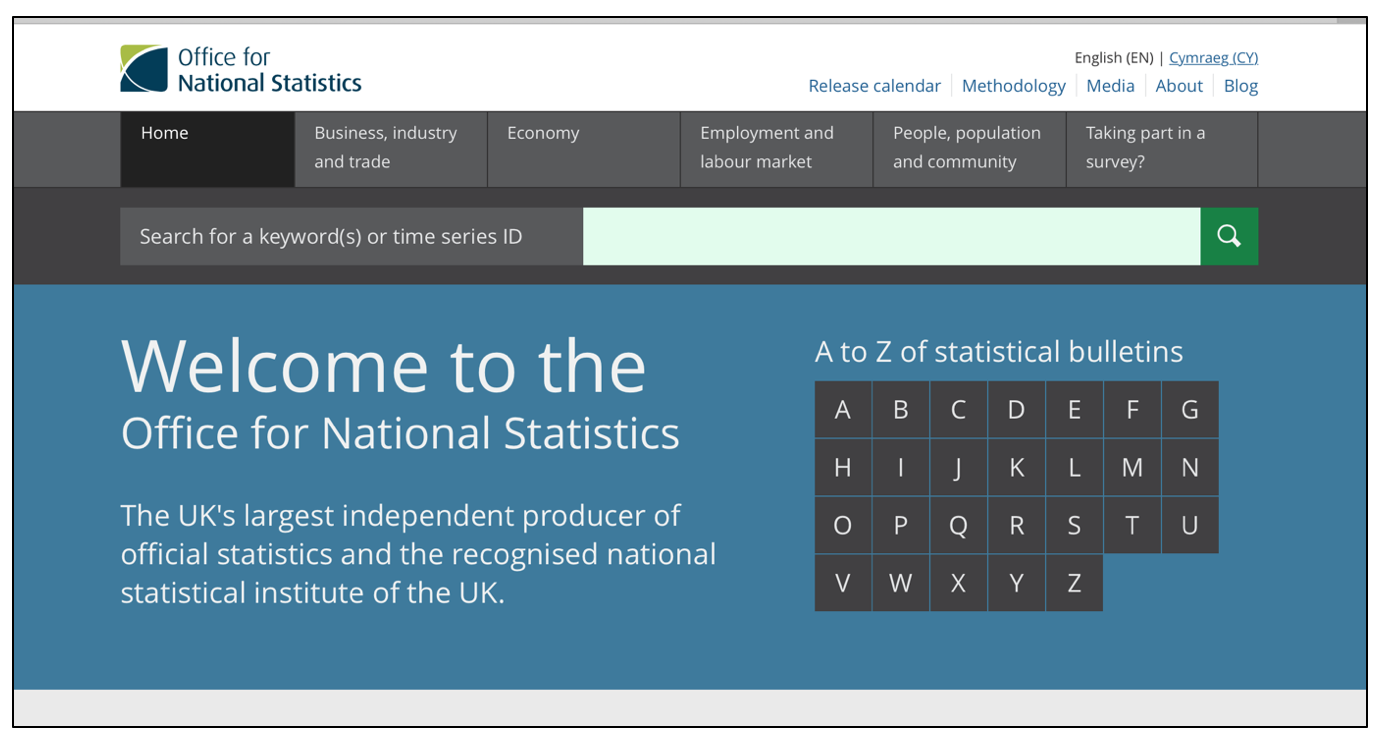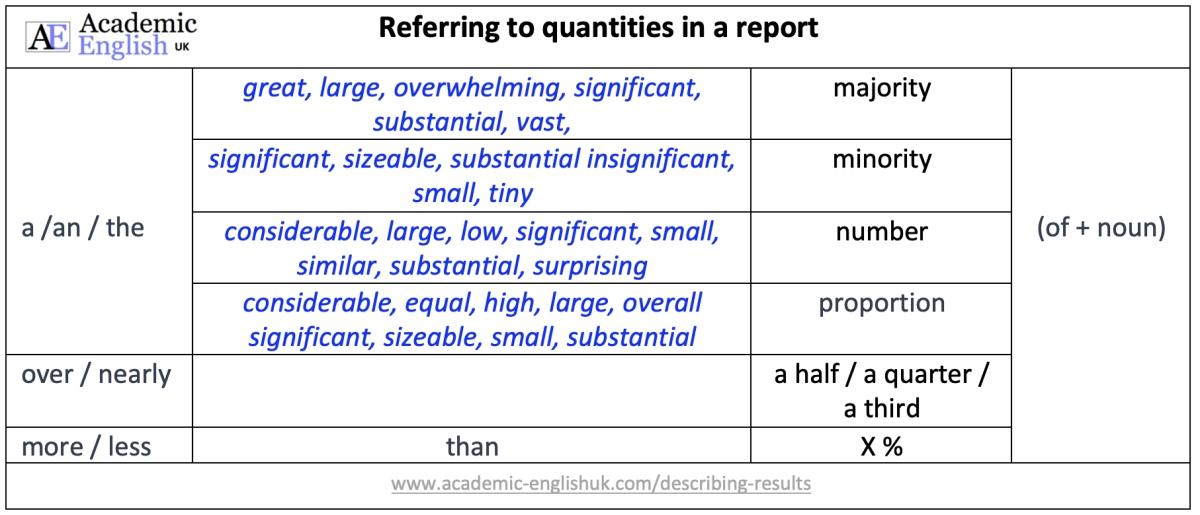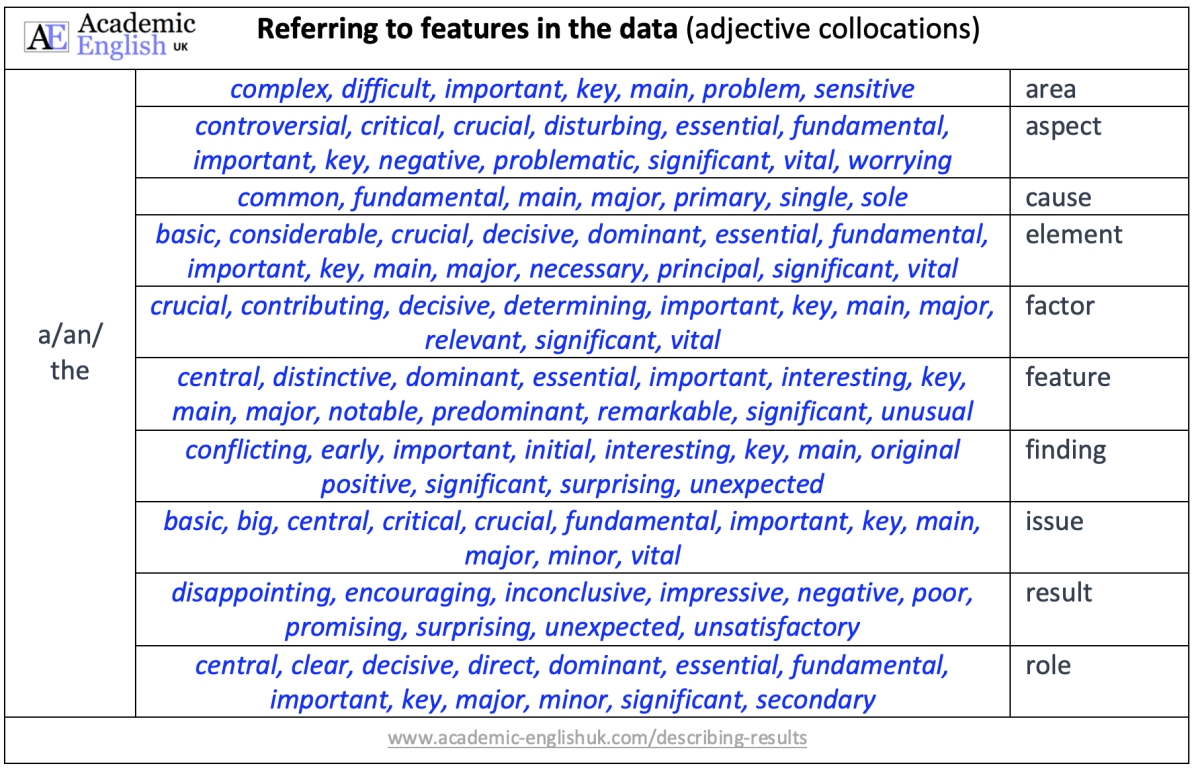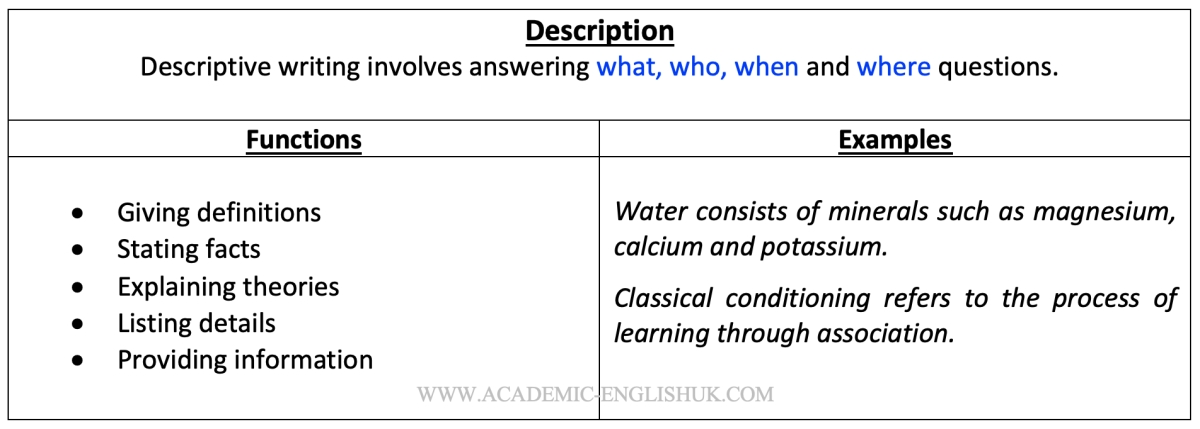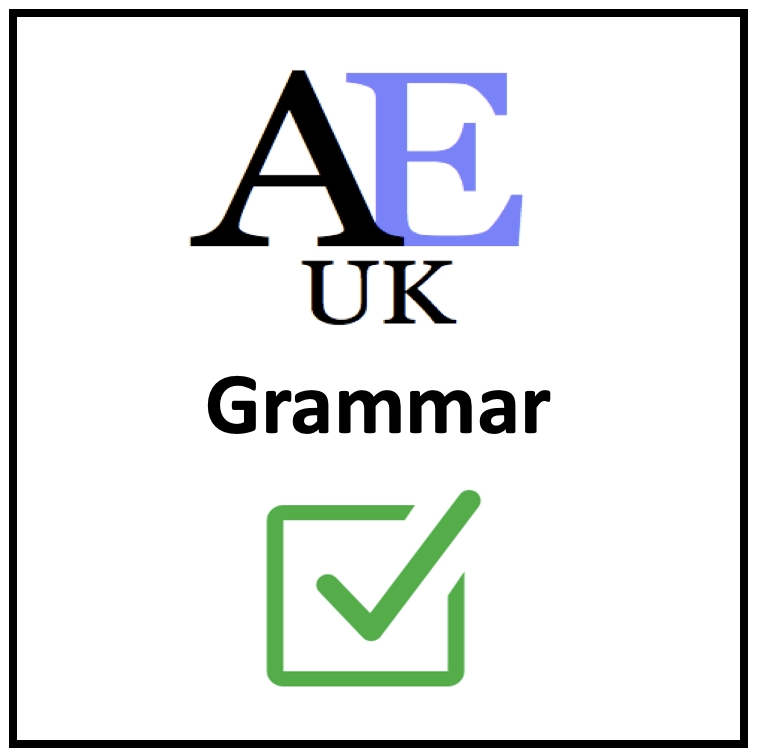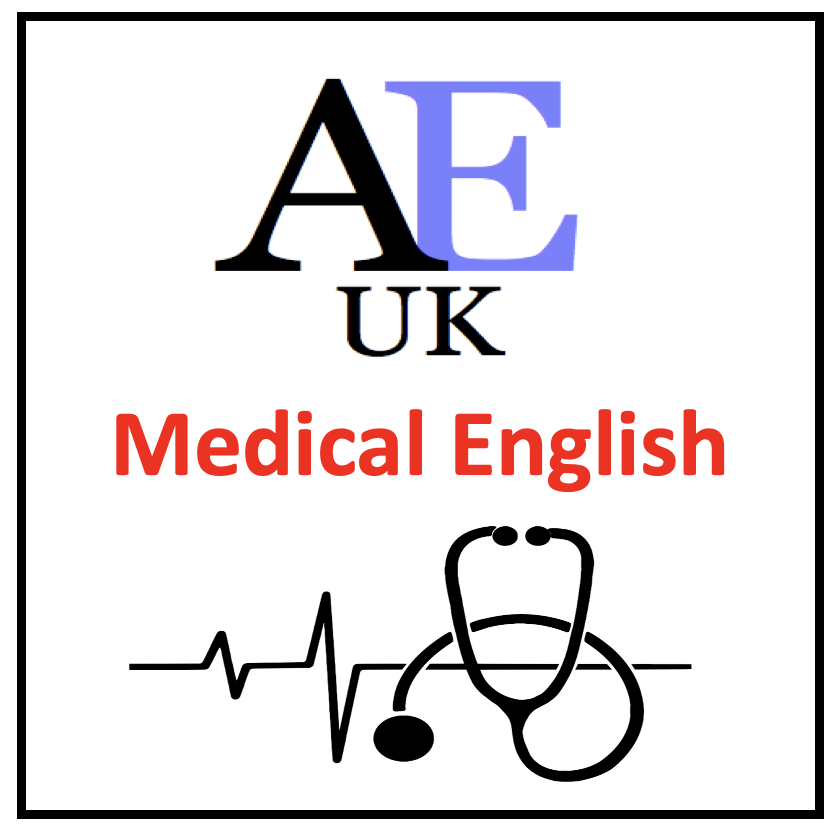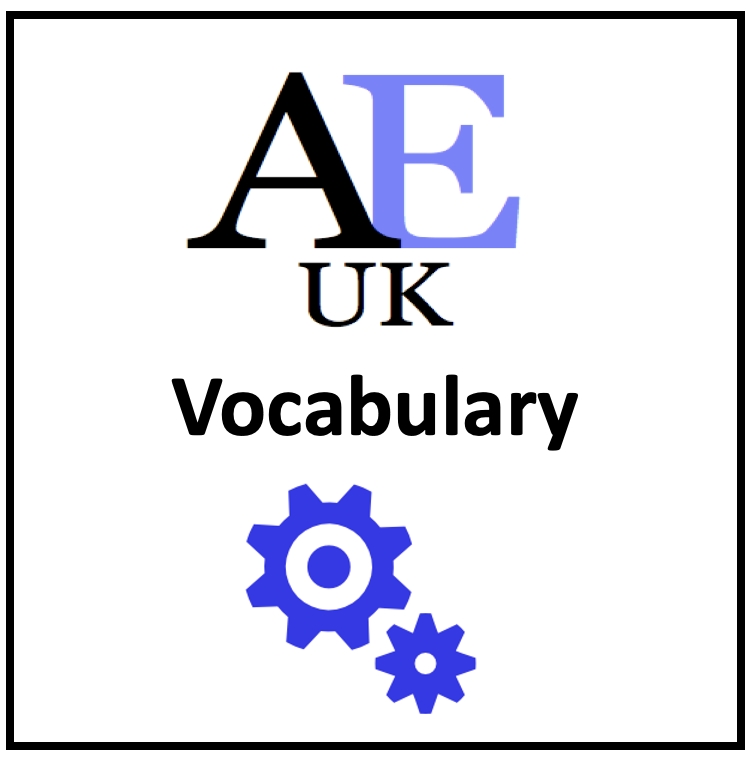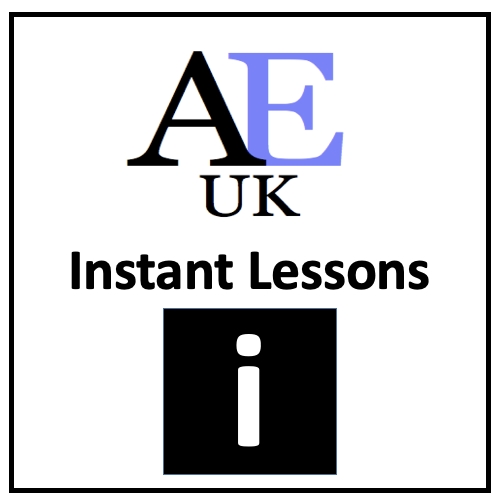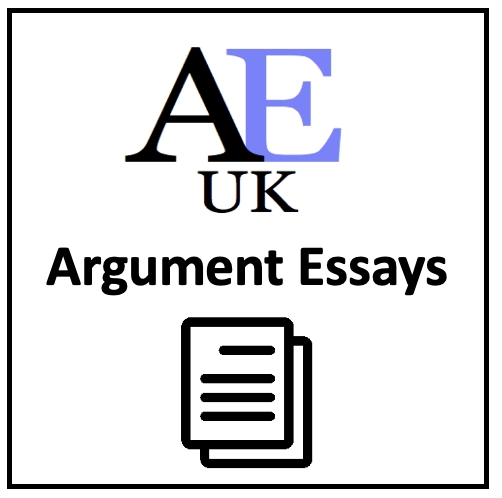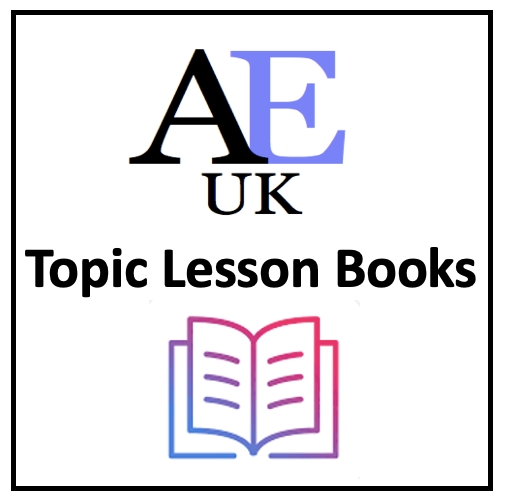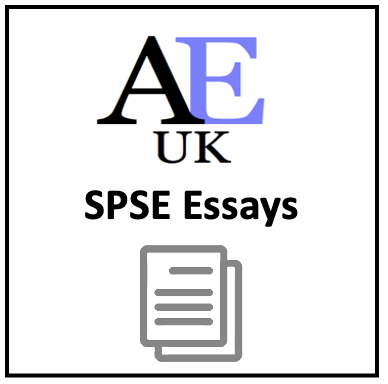RESOURCES: Reading / Writing / Listening / Speaking / Argument / SPSE / Reading Tests / Summary / Dictogloss / Grammar / Vocab / Critical Thinking / Instant Lessons / Medical English / Graphs / New 2024 /
Graphs & Charts

Graph and Chart Lessons
Describing Graphs – The Basics [updated 2023]
This lesson begins by labelling the key features of a graph and naming different graph / chart types. It then provides practice in describing a range of different lines (peak, plummet, etc..). This is followed by a fun activity where in pairs students describe and plot the lines on four graphs. Example. Level: ***** [B2/C1] TEACHER MEMBERSHIP / INSTITUTIONAL MEMBERSHIP
*
Describing graphs: analysis and evaluation (updated 2023)
This lesson begins with describing basic graphs and suggesting what they could represent. It then provides the language necessary for describing, analysing and evaluating. This is followed by students researching and analysing graphs/charts/tables from the Office of National Statistics (ONS) and giving a short presentation on their findings. Example. Level: ***** [B1/B2/C1] TEACHER MEMBERSHIP / INSTITUTIONAL MEMBERSHIP
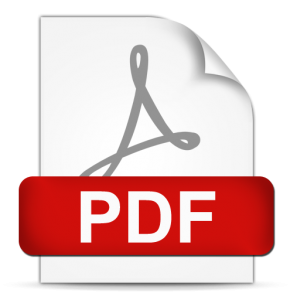 Describing Results (questionnaire data) [new 2023]
Describing Results (questionnaire data) [new 2023]
This lesson teaches students how to describe the results from a questionnaire. It provides language for describing quantities, group sizes, specific features and reporting verbs. It includes model answers and a range of practice activities. Example Level: ***** [B1/B2/C1] TEACHER MEMBERSHIP / INSTITUTIONAL MEMBERSHIP
Academic description, analysis & evaluation [new 2021]
This lesson helps to improve students’ awareness and understanding of the difference between description, analysis and evaluation. It includes paragraph analysis, a detailed language review reference sheet and graph and sentence level quotation analysis. – see worksheet example. Time: 120mins. Level ***** [[B2/C1] TEACHER MEMBERSHIP / INSTITUTIONAL MEMBERSHIP
Describing Graphs: The basics
This lesson shows how to label and describe a graph using a variety of language (increase, grow, fall, plummet, fluctuate, etc..). It focuses on adjective and verb collocations for natural precise descriptions and also includes a range of practice activities to improve graphical analysis.
Video
A short video on the describing graphs lesson
If you can’t access this YouTube video in your country, go here
Video Worksheet – click here
The basic features of a graph
Different graph / chart types
Describing language of a graph
Useful Graph Vocabulary
UP: increase / rise / grow / went up / soar / double / multiply / climb / exceed
DOWN: decrease / drop / fall / decline / plummet / halve / depreciate / plunge
UP & DOWN: fluctuate / undulated / dip
SAME: stable (stabilised) / levelled off / remained constant or steady / consistent
CHANGES: gently / gradually / slightly / steadily / a little
CHANGES: suddenly / sharply / dramatically / steeply / sudden
TOP: reached a peak / peaked / reached its highest level
BOTTOM: bottomed out / sank to a trough / the lowest level
Graphical Collocation
Verbs, adjectives and adjectives that naturally go together.
Example: Writing
Write a description of this graph.
The graph shows Ray-Ban sunglasses sales over 12 months in 2022. Sales began at the start of the year at 1000 and grew steadily to around 1800 in March. Sales then gradually fell to hit their lowest level of the year in April at around 900 pairs sold. Sales stabilised at approximately 1000 throughout May to July. However, in mid-July sales soared and in August peaked at 4000. Sales then plummeted and bottomed out in September at 1250. Sales then rose steadily, and the year finished at 2000 sales.
More exercises in the paying download ‘Describing graphs (the basics)’
Speaking: Pair Work activity – describe a graph
Pay-per-Download
Describing graphs – the basics [updated 2023]
This lesson begins by labelling the key features of a graph and naming different graph / chart types. It then provides practice in describing a range of different lines (peak, plummet, etc..). This is followed by a fun activity where in pairs students describe and plot the lines on four graphs. Example. Level: ***** [B2/C1] TEACHER MEMBERSHIP / INSTITUTIONAL MEMBERSHIP
*
Describing Graphs: Analysis and evaluation
This lesson shows how analyse and evaluate a graph using a variety of language phrases. It focuses on a set procedure of graphical description, analysis and evaluation. There are good clear examples and lots of exercises.
Video
A short video on the describing graphs analysis and evaluation lesson
If you can’t access this YouTube video in your country, go here
Video Worksheet – click here
Basic definition of analysis & evaluation
i. Analysis is ‘identifying’ the key highs and lows on a graph
ii. Evaluation is ‘the reasons’ why there are highs and lows on a graph.
Line graph
1. Describe this graph (analysis) and then suggest the reasons for these trends (evaluation)
Bar Chart
2.Describe this chart (analysis) and then suggest the reasons for these trends (evaluation)
Describe these graphs / charts (analysis) and then suggest the reasons for these trends (evaluation)
1. Analysis: Peaks in Feb, April, Dec.
2. Evaluation: Product is flowers (Feb=Valentine’s day / April = Easter / Dec = Christmas).
Other answers are possible with justification.
1. Analysis: Peak sales in June, July, August
2. Evaluation: Ice cream sales
Other answers are possible with justification.
Useful graph language: Description
The graph from (source) presents data on (title)…
The graph from (source) shows/ illustrates (title)…
If we look at this graph on (title) from (source) you can see…
The y axis (vertical) is… and the x axis (horizontal) is…
(Graph) These lines represent… (Bar) These Columns are… (Pie) These segments are… (Table)
Useful graph language: analysis
Overall summary: Overall, there is / has been… / Generally, there is…
What you can see is… / From the graph we can see…
I’d like to focus your attention on…
If you look at this…, you’ll see / notice / understand
A key significant area is … / Two key significant areas are…
An important point is… / Two important points I’d like to illustrate are…
What is interesting here is…
An interesting observation is…
An analysis of the graph illustrates…
Looking at ….
Useful graph language: evaluation
This seems to suggest that…
This is possibly because of…
This is (clearly) due to…
One reason for this could be…
An evaluation of this data suggests / provides evidence for / highlights…
To provide evidence to my previous point the graph highlights…
Overall, this highlights the significance of…
Therefore, this provides evidence that…
Describing graphs:
Task: Analyse and evaluate an Office of National Statistics (ONS) graph / chart / table and give a 1-2-minute presentation on your findings.
Guidelines
-
Your teacher will allocate one of the graphs / charts / tables below.
-
Open the specific ONS webpage link and find the specific section and graph / chart / table.
-
Analyse and evaluate the graph / chart / table using language sheet 1.
-
You must follow the 3 key stages (describe the key elements (labelling), analysis and evaluation).
-
You may need to do some internet research to help your understanding / evaluation.
-
Give a 2-minute presentation of your graph using your own analysis and evaluation.
-
You have 20-minutes preparation time.
18 more different graphs / charts / tables with paid version.
Other topics: life satisfaction / divorce / religion / mental health / alcohol / mobile phones / murder / technology / leisure / population growth / life expectancy / etc..
Pay-per-Download
Describing graphs: analysis and evaluation (updated 2023)
This lesson begins with describing basic graphs and suggesting what they could represent. It then provides the language necessary for describing, analysing and evaluating. This is followed by students researching and analysing graphs/charts/tables from the Office of National Statistics (ONS) and giving a short presentation on their findings. Example. Level: ***** [B1/B2/C1] TEACHER MEMBERSHIP / INSTITUTIONAL MEMBERSHIP
Describing Results: Questionnaires
This webpage provides information on how to describe the results from a questionnaire. It provides language for describing quantities, group sizes, specific features and reporting verbs. It includes model answers and a range of practice activities (bar charts, pies charts and tables).
Video
A short video on the describing results lesson
If you can’t access this YouTube video in your country, go here
Video Worksheet – click here
Describing Results Example
This pie chart has been created from a questionnaire which asked 500 students what the main causes of their mental health issues at university were.
Exercise
Read through these short descriptions of the above data and highlight the reporting verbs and linking words.Then highlight the phrases for describing quantity and adjective collocations. You may need to study the describing results language development below first. Download descriptions here.
- Descriptions
- Reporting verbs & linking words ANSWERS
- Describing quantity and adjective collocations ANSWERS
- The most significant finding from the questionnaire is that approximately a third of respondents (32%) said that loneliness was the main cause of their mental health issue at university. This was in contrast to a small number of students (4%) saying that alcohol was the primary cause.
- Although the majority of students stated that loneliness and stress were the most significant mental health issues at university at 55%, academic performance and money problems were also reported to be fundamental at 28%.
- A small minority of students (4%) contended that their mental health issues were attributed to alcohol abuse, whereas a similar number (5%) declared family issues were the main contributing factor.
- The most significant finding from the questionnaire is that approximately a third of respondents (32%) said that loneliness was the main cause of their mental health issue at university. This was in contrast to a small number of students (4%) saying that alcohol was the primary cause.
- Although the majority of students stated that loneliness and stress were the most significant mental health issues at university at 55%, academic performance and money problems were also reported to be fundamental at 28%.
- A small minority of students (4%) contended that their mental health issues were attributed to alcohol abuse, whereas a similar number (5%) declared family issues were the main contributing factor.
- The most significant finding from the questionnaire is that approximately a third of respondents (32%) said that loneliness was the main cause of their mental health issue at university. This was in contrast to a small number of students (4%) saying that alcohol was the primary cause.
- Although the majority of students stated that loneliness and stress were the most significant mental health issues at university at 55%, academic performance and money problems were also reported to be fundamental (issue) at 28%.
- A small minority of students (4%) contended that their mental health issues were attributed to alcohol abuse, whereas a similar number (5%) declared family issues were the main contributing factor.
Describing Results Language Development
Pay-per-Download
Describing Results (questionnaire data) [new 2023]
This lesson teaches students how to describe the results from a questionnaire. It provides language for describing quantities, group sizes, specific features and reporting verbs. It includes model answers and a range of practice activities. Example Level: ***** [B1/B2/C1] TEACHER MEMBERSHIP / INSTITUTIONAL MEMBERSHIP
Description, analysis and evaluation (writing)
Description: To give a clear and detailed picture of something.
Analysis: To make a methodical and detailed examination.
Evaluation: To make judgements about the value of information.
Video
A short 9-minute video on description, analysis and evaluation in writing.
Video Worksheet Download – go here
PDF Lesson Download
Academic description, analysis & evaluation [new 2021]
This lesson helps to improve students’ awareness and understanding of the difference between description, analysis and evaluation. It includes paragraph analysis, a detailed language review reference sheet and graph and sentence level quotation analysis. – see worksheet example. Time: 120mins. Level ***** [[B2/C1] TEACHER MEMBERSHIP / INSTITUTIONAL MEMBERSHIP
Graphs and Charts Downloads
Describing Graphs – The Basics [updated 2023]
This lesson begins by labelling the key features of a graph and naming different graph / chart types. It then provides practice in describing a range of different lines (peak, plummet, etc..). This is followed by a fun activity where in pairs students describe and plot the lines on four graphs. Example. Level: ***** [B2/C1] TEACHER MEMBERSHIP / INSTITUTIONAL MEMBERSHIP
*
Describing graphs: analysis and evaluation (updated 2023)
This lesson begins with describing basic graphs and suggesting what they could represent. It then provides the language necessary for describing, analysing and evaluating. This is followed by students researching and analysing graphs/charts/tables from the Office of National Statistics (ONS) and giving a short presentation on their findings. Example. Level: ***** [B1/B2/C1] TEACHER MEMBERSHIP / INSTITUTIONAL MEMBERSHIP
 Describing Results (questionnaire data) [new 2023]
Describing Results (questionnaire data) [new 2023]
This lesson teaches students how to describe the results from a questionnaire. It provides language for describing quantities, group sizes, specific features and reporting verbs. It includes model answers and a range of practice activities. Example Level: ***** [B1/B2/C1] TEACHER MEMBERSHIP / INSTITUTIONAL MEMBERSHIP
Academic description, analysis & evaluation [new 2021]
This lesson helps to improve students’ awareness and understanding of the difference between description, analysis and evaluation. It includes paragraph analysis, a detailed language review reference sheet and graph and sentence level quotation analysis. – see worksheet example. Time: 120mins. Level ***** [[B2/C1] TEACHER MEMBERSHIP / INSTITUTIONAL MEMBERSHIP
More digital resources and lessons
Readings
online resources
Tests
online resources
Grammar
online resources
Medical English
online resources
New for 2024
online resources
DropBox Files
Members only
Writing
online resources
Summary
online resources
Vocabulary
online resources
Instant Lessons
online resources
Marking Criteria
online resources
OneDrive Files
Members only
Listening
online resources
Argument
online resources
Critical Thinking
online resources
Topic-lessons
online resources
Feedback Forms
online resources
6-Week Course
Members only
Speaking
online resources
SPSE Essays
online resources
Free Resources
online resources
Charts and graphs
online resources
AEUK The Blog
online resources
12-Week Course
Members only



